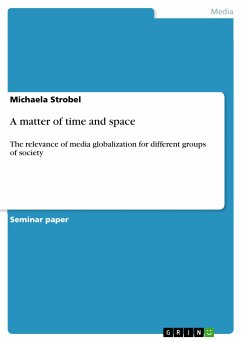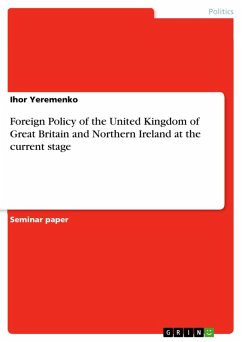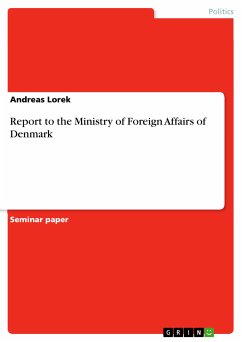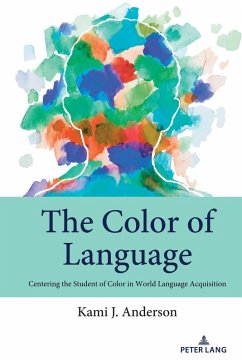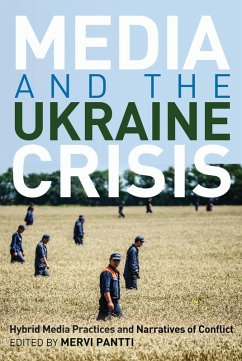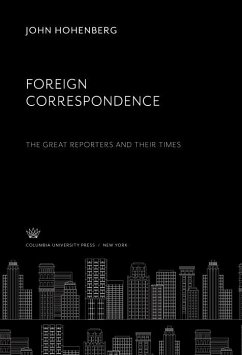
Re-importing the foreign? (eBook, PDF)
An empirical survey about identity-formulation within the cosplay community worldwide on the basis of facebook-groups

PAYBACK Punkte
0 °P sammeln!
Seminar paper from the year 2012 in the subject Communications - Multimedia, Internet, New Technologies, grade: keine, Stockholm University (JMK), course: Global Media Studies II, language: English, abstract: Despite the growing importance of economies outside the 'western' hemisphere (Thussu, 2007: 28), the scholarly discourse within media science is still unceasingly revolving around the issue of 'Western' hegemony. This is mainly concerning two aspects of media: structures and content. While on the structural (MacBridge Report 1980 (Hafez, 2007: 80)), financial (Thussu, 2007: 27) and instit...
Seminar paper from the year 2012 in the subject Communications - Multimedia, Internet, New Technologies, grade: keine, Stockholm University (JMK), course: Global Media Studies II, language: English, abstract: Despite the growing importance of economies outside the 'western' hemisphere (Thussu, 2007: 28), the scholarly discourse within media science is still unceasingly revolving around the issue of 'Western' hegemony. This is mainly concerning two aspects of media: structures and content. While on the structural (MacBridge Report 1980 (Hafez, 2007: 80)), financial (Thussu, 2007: 27) and institutional (Cottle, 2009: 30) side a dominion of US-American (Vu, 2012), Australian (Hafez, 2007: 173) or European (Hillard, 2009) media corporations is still observable - although translational interlinkages, mergers and complex shareholder-structures make it increasingly hard to detangle (Hafez, 2007: 159) - research on the content-level is starting to look for more democratic models. The 'core periphery'-approach (Galtung, 1971) is slowly being reassessed, yet the 'flow'-model (Thussu, 2007: 11) still postulates that the major influence is coming from 'the North' flowing towards the economic 'South' (Cottle, 2009: 29), only being challenged by minor 'contra-flows' (Thussu, 2007: 20) of niche products which find some fans among sub-cultures in the 'Western' society. That those flows could interweave at some point and take on 'hybrid' (Thussu, 2007: 20) forms, is only recognized to take place at the receiving end. This can for example refer to the evolution of a certain kind of 'German' reggae or 'Chinese' rock music. Hybrids almost never happen on the structural level of pre-modeled content, e.g. 'Who wants to be a millionaire' has the same look, sound and rules all over this planet. Thus amalgam media products are primarily developing in a more active media use. This kind of media use can contribute to the emergence of trends or sub-cultures. Aligning with Fiske (Fiske, 1987), I am daring the thesis that it is less important who is controlling the buttons behind the media corporations (structures), but it gives much more information how people are actually using this output (content) and produce meaning (Storey, 2001: 175) if we want to find out, how globalized this world is within the media (Storey, 2001: 190). As a starting point I will therefore take a sub-culture, evolved from media content flowing in the less frequented direction of 'East' to 'West': cosplay. And as the contemporary medium of choice concerning self-expression, the Internet appears to be the appropriate study subject.
Dieser Download kann aus rechtlichen Gründen nur mit Rechnungsadresse in A, B, BG, CY, CZ, D, DK, EW, E, FIN, F, GR, HR, H, IRL, I, LT, L, LR, M, NL, PL, P, R, S, SLO, SK ausgeliefert werden.




